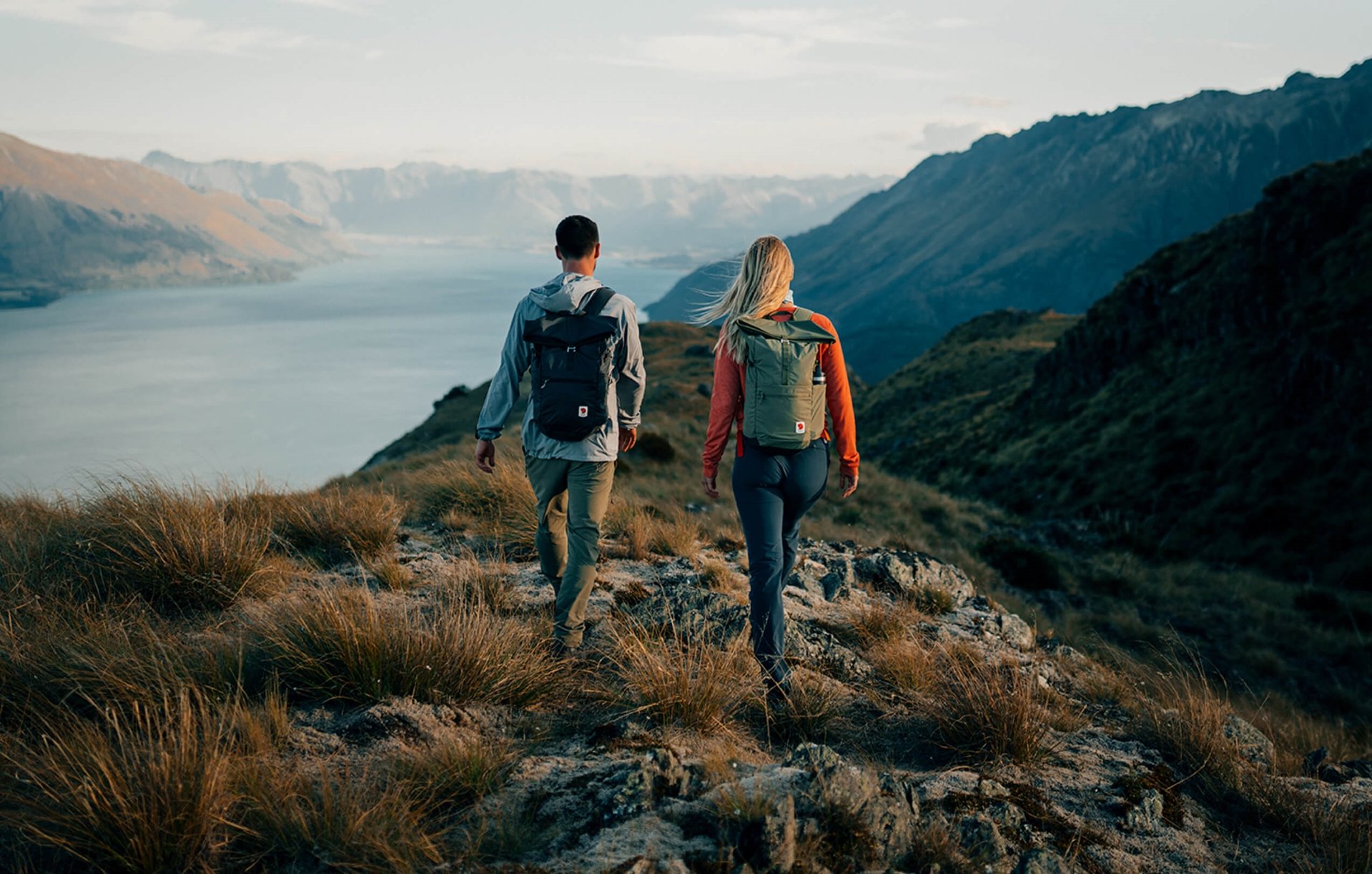What should I wear while trekking?
Before actually checking out what is inside Carl’s backpack, let’s take a moment to consider clothing. Since you will be carrying everything you bring, it’s always important to keep your packing list and clothing items to a minimum when planning a multi-day adventure while ensuring you have all the functionality you need to be comfortable and confident in nature. Carl’s advice is to use layers to ensure optimum comfort in varying conditions. His personal favorite base layer is a merino wool base layer that will feel comfortable against your skin and be able to provide the dual functionality of keeping you both warm and drying quickly when wet. As a mid-layer Carl chooses a fleece hoodie to provide thermal insulation when needed. For an outer layer he wears a sustainable waterproof shell which provides extra functionality for protection in windy or rainy conditions. Being able to add and remove layers will ensure that you can regulate your body temperature, depending on how much you are moving and the pace you set out on your trek. Additionally, Carl wears a cap to protect him from the sun.
On the bottom, Carl wears light trekking zip-off trousers which have the added benefit of converting into shorts when needed, meaning you won’t need to carry an extra pair in your pack. On his feet he wears his well-worn leather, trekking boots which have been with him through many adventures. When it comes to trekking footwear Carl’s top tip is if your traditional, leather pair of trekking boots are broken in well and you take care of your feet you will be comfortable for the whole trek. One can always go lighter, but traditional leather trekking boots are the safest choice. And finally, to make sure your feet stay comfortable throughout the trek bring two pairs of socks, a thin liner and a thick pair of wool socks. When worn together it’s the best way to protect your feet from blisters.
What should I carry in my backpack?
For his tent, Carl has chosen a model that is suitable to sleep up to three people. Of course, this decision will also depend on whether you are trekking solo or in a small group. In the summer time a two season sleeping bag will suffice and always bring along a lightweight, inflatable sleeping mat to ensure a comfortable night’s sleep. Don’t forget to pack away your sleeping bag and mat inside a waterproof bag to keep the essentials dry in case rain gets inside your pack.
The extra clothes Carl recommends you take with you on this kind of trek are: an extra base layer, a pair of long johns and a spare set of socks. It’s also worth packing these extra clothes inside a waterproof bag. Additionally, it’s smart to carry a light insulation jacket that you can put on in the evenings. A windbreaker is an optional addition to Carl’s spare clothing list as well. And finally, a firm favorite for Carl, is a comfortable pair of sandals to wear at the camp to ensure that your feet are in the best shape for the next day.
Keeping things organized inside your backpack is a key element of packing well for an outdoor adventure. A small gear bag should include both a first aid kit and any toiletries you may need for the trek. Another bag should hold necessary utensils for eating, a head lamp and other equipment detailed in the packing lists below. Make sure to bring at least a 1 liter water bottle, and, if the environment allows, a water filter so that you can drink from water sources found on the trail. Food and snacks also deserve their own bag - in this case Carl has freeze dried food which is both weight and calorie efficient - but it’s important to bring the food that you will enjoy. Alongside food, it’s important to bring a stove and accompanying gas canister. Another firm favorite for Carl is to carry a water bag, this means when he makes camp he won’t need to keep running off to the water station or stream but instead will be able to carry a substantial amount of water to his tent in one go. Finally, Carl’s backpack of choice to carry everything he needs is a 52L technical pack, designed for trekking multi days.
This is a great starting point for a basic equipment list for a two night, three day trek during spring, summer or early autumn. But don’t forget to hone your equipment list to your own personal needs. Carl definitely has his own favorites and personal things that cannot be forgotten in his packing list, which he has developed throughout many years of outdoor experience. Now it’s time to plan your own equipment must-haves. Nature is always waiting, it’s never a bad time to prepare for the future outdoor adventures that motivate us every day.
